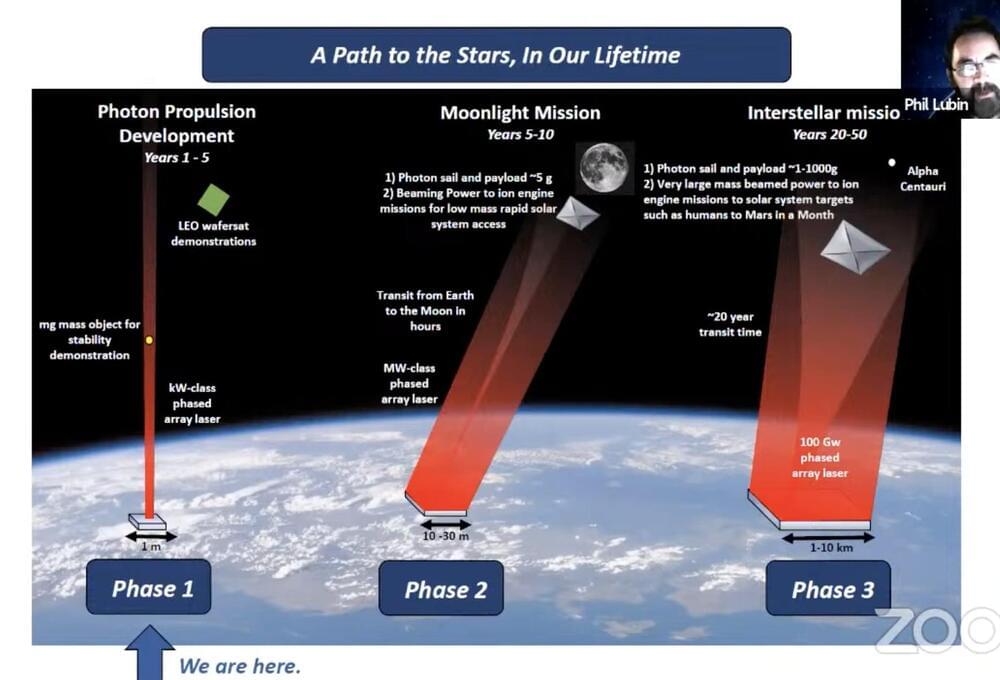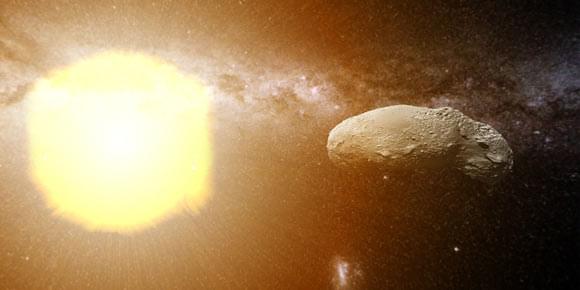Qualcomm has just announced the Snapdragon 8 Gen 1, but how does it compare to Mediatek’s new Dimensity 9,000 chipset?
Page 5528
Dec 4, 2021
Pegasus maker probes reports its spyware targeted US diplomats
Posted by Saúl Morales Rodriguéz in categories: cybercrime/malcode, government, mobile phones, surveillance
The Israeli spyware maker in the Pegasus surveillance scandal said Friday it was investigating reports the firm’s technology was used to target iPhones of some US diplomats in Africa.
Apple has begun alerting people whose phones were hacked by NSO’s spyware, which essentially turns handsets into pocket spying devices and sparked controversy this year after reportedly being used on activists, journalists and politicians.
“On top of the independent investigation, NSO will cooperate with any relevant government authority and present the full information we will have,” the firm said in a statement.
Dec 4, 2021
Follow Your Nose: A Key Clue to Understanding and Treating COVID-19
Posted by Omuterema Akhahenda in categories: biotech/medical, chemistry
This paper suggests that ATP release induced by the SARS-CoV-2 virus plays a key role in the genesis of the major symptoms and complications of COVID-19. Infection of specific cells which contain the Angiotensin-Converting Enzyme 2 (ACE2) receptor results in a loss of protection of the Mineralocorticoid Receptor (MR). Local activation by cortisol stimulates the release of ATP initially into the basolateral compartment and then by lysosomal exocytosis from the cell surface. This then acts on adjacent cells. In the nose ATP acts as a nociceptive stimulus which results in anosmia. It is suggested that a similar paracrine mechanism is responsible for the loss of taste. In the lung ATP release from type 2 alveolar cells produces the non-productive cough by acting on purinergic receptors on adjacent neuroepithelial cells and activating, via the vagus, the cough reflex. Infection of endothelial cells results in the exocytosis of WeibelPalade bodies. These contain the Von Willebrand Factor responsible for micro-clotting and angiopoietin-2 which increases vascular permeability and plays a key role in the Acute Respiratory Distress Syndrome. To test this hypothesis this paper reports proof of concept studies in which MR blockade using spironolactone and low dose dexamethasone (SpiDex) was given to PCR-confirmed COVID-19 patients. In 80 patients with moderate to severe respiratory failure 40 were given SpiDex and 40 conventional treatment with high dose dexamethasone (HiDex). There was 1 death in the HiDex group and none in the SpiDex. As judged by clinical, biochemical and radiological parameters there were clear statistically significant benefits of SpiDex in comparison to HiDex. A further 20 outpatients with COVID-19 were given SpiDex. There was no control group and the aim was to demonstrate safety. No adverse effects were noted and no patient became hyperkalaemic. 90% were asymptomatic at 10 days. The very positive results suggest that blockade of the MR can produce major benefit in COVID19 patients. Further larger controlled studies of inpatients and outpatients are required not only for SARS-CoV-2 infection per se but also to determine if this treatment affects the incidence of Long COVID.
Early in the course of the SARS-CoV-2 pandemic it became clear that one of the commonest symptoms was loss of smell and/or taste. Self-reported alterations in smell and taste were detailed in a meta-analysis of 3,563 confirmed cases of COVID-19. They found that the overall prevalence of smell or taste impairment was 47% rising to 67% in patients with more severe disease. In about 20% of patients it was an isolated presenting symptom. Han et al. reviewed the pathophysiology of anosmia in upper respiratory tract infections. Many rhinovirus infections of the nasal olfactory epithelium produce post-viral anosmia which persists for weeks or months until the cell damage is repaired. Post-viral anosmia has been reported with HCoV-229E infection with the olfactory dysfunction lasting more than 6 months. This corona virus does not use ACE2 to get into cells. Conductive or obstructive anosmia is often found with the common cold virus.
Dec 3, 2021
Fake News Detection with Machine Learning, using Python
Posted by Quinn Sena in category: robotics/AI
One of the most challenging area of Machine Learning is the one that regards the language and it is known as Natural Language Processing (NLP). It is true that all the area of Machine Learning can be complex and challenging at some level, but NLP is…
Dec 3, 2021
The world’s first sneakers made from stone
Posted by Quinn Sena in categories: materials, mobile phones
Circa 2018 c:
Shoes made from stone may sound uncomfortable and something the Flintstones might wear. However, thanks to innovative technology, it is possible to transform ordinary stone into a flexible and paper-thin material. German companies Roxxlyn and Nat-2 decided to work together and use this material to create the world’s first sneakers made from natural stone!
When we think about stone, we think about hard and sturdy material, rather than something flexible. However, Roxxlyn, an expert in creating ultra-light design pieces from stone, developed a technology to use stone to make all kinds of accessories and design pieces, from phone cases to belts, and now sneakers.
Continue reading “The world’s first sneakers made from stone” »
Dec 3, 2021
Direct Laser Propulsion For Earth-Mars in 30 Days and Eventually 2.5 Days
Posted by Quinn Sena in category: space travel
Limitless Space Institute gave out nine interstellar space-related grants for about $1 million to 2 million each. Phil Lubin’s direct laser propulsion group received a grant and they will use to prove out their directed laser propulsion system at the 10–20 watt level. They are also working on components at the kilowatt to tens of kilowatt level. The plan would be to scale to tens of kilowatts and work towards power beaming to the moon for experiments. In 5–10 years, they hope to reach megawatt levels.
If they reach 500 megawatts then direct laser propulsion could be used for 30 day transit times to Mars. When the system scales to the gigawatt or tens of gigawatt level with a matching deceleration and launching system on Mars this would enable 2.5 day transit times between Earth and Mars. Increasing or decreasing mass by 10,000 times changes the speed by 10 times. A 100-gram package could sent ten times faster than a 1,000 kilogram package using the same size laser array and power system. You could send a 1,000 kilogram mission to Mars in 30 days or rapidly deliver an urgent package of 100 grams to Mars in about 3 days.
This system for urgent delivery of tiny packages with 1G acceleration and deceleration would be feasible in the 10–20 year time frame.
Dec 3, 2021
Thanks to renewables, ‘insanely cheap electricity’ is coming. But when?
Posted by Shubham Ghosh Roy in categories: futurism, nuclear energy
There’s even talk in some quarters that solar could one day fulfil the unrealised promise of nuclear power to generate electricity so abundant that it would be “too cheap to meter”.
So how cheap can solar get? And will you — the energy consumer — still have a power bill?
This future of cheap power is already here — at least sometimes.
Dec 3, 2021
Gaia EDR3 proper motions of Milky Way dwarfs. II: Velocities, Total Energy and Angular Momentum
Posted by Saúl Morales Rodriguéz in categories: energy, satellites
Abstract: Here we show that precise Gaia EDR3 proper motions have provided robust estimates of 3D velocities, angular momentum and total energy for 40 Milky Way dwarfs. The results are statistically robust and are independent of the Milky Way mass profile. Dwarfs do not behave like long-lived satellites of the Milky Way because of their excessively large velocities, angular momenta, and total energies. Comparing them to other MW halo population, we find that many are at first passage, $\le$2 Gyr ago, i.e., more recently than the passage of Sagittarius, $\sim$4–5 Gyr ago. We suggest that this is in agreement with the stellar populations of all dwarfs, for which we find that a small fraction of young stars cannot be excluded. We also find that dwarf radial velocities contribute too little to their kinetic energy when compared to satellite systems with motions only regulated by gravity, and some other mechanism must be at work such as ram pressure. The latter may have preferentially reduced radial velocities when dwarf progenitors entered the halo until they lost their gas. It could also explain why most dwarfs lie near their pericenter. We also discover a novel large scale structure perpendicular to the Milky Way disk, which is made by 20% of dwarfs orbiting or counter orbiting with the Sagittarius dwarf.
From: Francois Hammer [view email].
Dec 3, 2021
Part of Earth’s Water Came from the Sun, New Study Suggests
Posted by Saúl Morales Rodriguéz in category: space
“The Earth was very water-rich compared to other rocky planets in the Solar System, with oceans covering more than 70% of its surface, and scientists had long puzzled over the exact source of it all,” said Professor Phil Bland, director of the Space Science and Technology Centre at Curtin University.
“An existing theory is that water was carried to Earth in the final stages of its formation on C-type asteroids, however previous testing of the isotopic ‘fingerprint’ of these asteroids found they, on average, didn’t match with the water found on Earth meaning there was at least one other unaccounted for source.”
“Our research suggests the solar wind created water on the surface of tiny dust grains and this isotopically lighter water likely provided the remainder of the Earth’s water.”


















